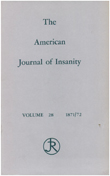Symptoms of PTSD following recovery of war dead: 13-15-month follow-up
Abstract
OBJECTIVE: The authors explored whether individuals who participated in the recovery of war dead were more likely to experience later symptoms of posttraumatic stress disorder (PTSD) than were individuals who were not involved in the recovery of war dead. METHOD: PTSD symptoms were assessed by questionnaire in men and women who had or had not handled human remains during the Persian Gulf War: 116 men and women who had and 118 who had not handled human remains participated in the study 3-5 months after returning from the war; 55 of the subjects who had and 56 of those who had not handled human remains participated in a follow-up assessment 13-15 months after their return. RESULTS: Subjects who had been involved in the recovery of war dead had significantly higher symptom levels than comparison subjects at both time points. CONCLUSIONS: After more than 1 year, individuals who had handled human remains during wartime were at higher risk for PTSD symptoms than those who had not.
Access content
To read the fulltext, please use one of the options below to sign in or purchase access.- Personal login
- Institutional Login
- Sign in via OpenAthens
- Register for access
-
Please login/register if you wish to pair your device and check access availability.
Not a subscriber?
PsychiatryOnline subscription options offer access to the DSM-5 library, books, journals, CME, and patient resources. This all-in-one virtual library provides psychiatrists and mental health professionals with key resources for diagnosis, treatment, research, and professional development.
Need more help? PsychiatryOnline Customer Service may be reached by emailing [email protected] or by calling 800-368-5777 (in the U.S.) or 703-907-7322 (outside the U.S.).



